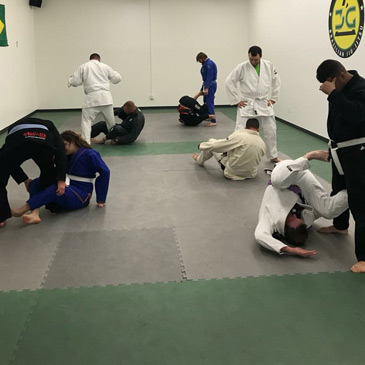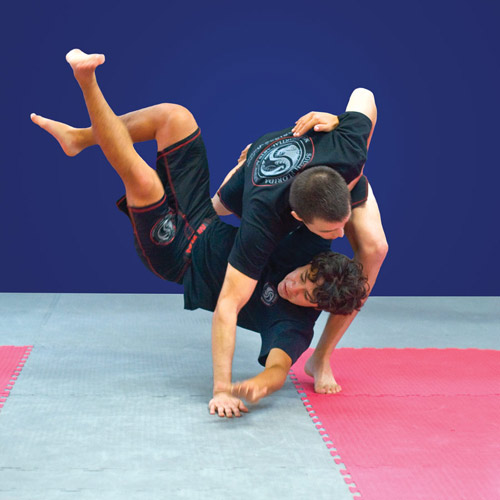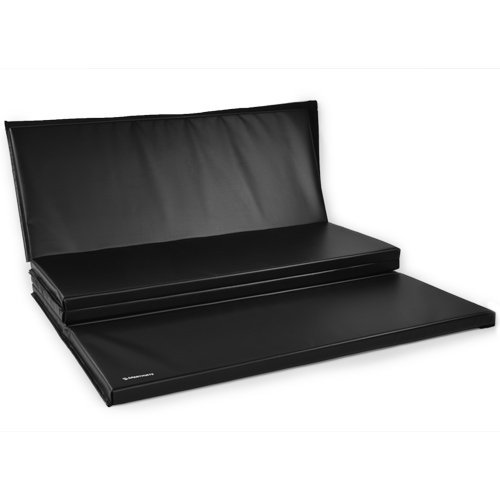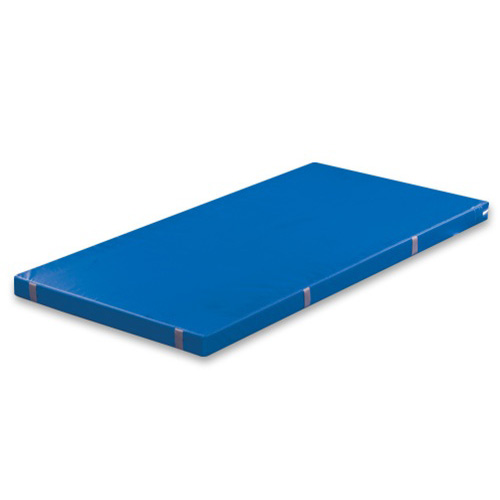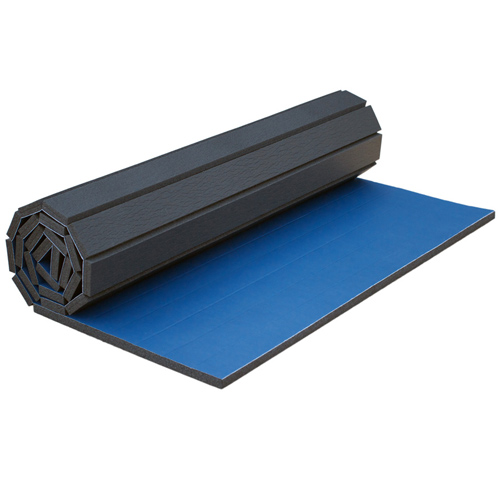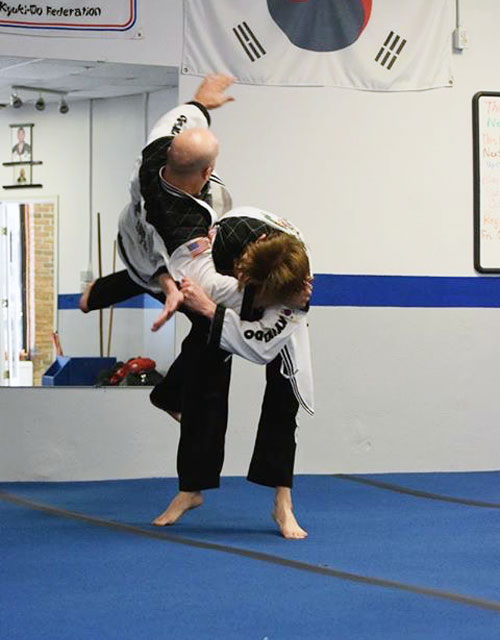What Are Judo Mats Made Of?
Related Product: Training Crash Mat Non-Fold 4x8 Ft. x 4 Inch
The material in use often will depend on the thickness of the mat. Some judo mats even have a cushioned center with various surfaces available.
Here are some of the materials you can expect to find in judo mats made for impact absorption, including some with no-slip and no-burn tatami surfaces.
EVA Foam
EVA foam, short for ethylene vinyl acetate, is a common type of material found in practice and dojo judo mats. EVA is a closed cell type of foam, which means it has a softness, flexibility, and traction level that mixes the best properties of durable rubber and heavily cushioned foam.This type of material has a firmness to it that gives martial arts athletes the ability to make a quick move against an opponent. The surface has just a bit of traction, which is a perfect compliment to its firm and solid footing. Athletes won’t sink into the material so far that he or she could stumble or stick when trying to make a move.
On the surface, you’ll find a no-burn tatami top on Greatmats EVA foam judo mats. This surface ensures that those thrown to and grappling on the mat will not suffer a mat burn on the skin, which can be painful and reduce the ability to train at the same level until the burn heals.
The majority of EVA foam judo mats will measure between 1-1/4 and 1-5/8 inches in thickness. The thickest mats can provide an ATSM fall height rating of up to 4 feet, which absorbs the shock of a fall, while also limiting the danger of head injuries.
Our most popular Judo puzzle mat system is comprised of Grappling MMA Mats in a 1.5 inch thickness. It has a interlocking style edge, which makes installation go fast. It features a reversible design with two different colors too, which gives it a bit more longevity than a one-sided mat, as you can just reverse the piece if the top side becomes damaged or you want to create a different floor design for competition or training exercises.
Polyethylene Foam
Polyethylene (PE) foam delivers a bit thicker cushioning option than EVA foam in judo mats. With polyethylene, you’ll still be using a closed-cell material that delivers a high level of durability with a lightweight design.We use PE foam in our Gym Mats 5x10 Ft x 2 Inch product. This large mat has an 18-ounce durable vinyl cover, so it can stand up to repeated use without breaking down. The vinyl gives athletes the traction they need during workouts.
When it’s time to store the folding mat, its sections fold on top of each other, reducing the space needed for storage.
XPE Foam
Some judo mats will contain an XPE foam or cross-linked polyethylene foam, which has a high rebond foam core. This is a cross-linked PE foam with a smooth surface. It’s also durable and lightweight, so it’s great for providing a high level of cushioning for martial arts students.One of our most popular mats featuring this type of foam is the Roll Out Mats 2 Inch product.
The foam in this roll-out mat is flame bonded to a vinyl top that has a tatami surface for additional traction for bare foot sports. The vinyl also allows for sudden movements over the cushioned foam.
This type of mat has XPE in the core, delivering the cushioning required for the martial arts studio. Gymnastics and cheer studios also use this type of foam in their mats for cushioned landings during stunts.
To allow the mat to easily roll up for storage, cuts are placed in the foam every few inches. As you roll up the mat, the cut allows the back of the foam to pull apart a little bit, so you can roll the mat tightly. But the cuts do not affect the integrity of the mat, because when it is laid out flat, the cuts press against each other and maintain the strength of the material.
Also, many quality folding mats such as this Folding Panel Mat also uses XPE foam due to the superior cushion it provides.
Polyurethane Foam
For the maximum cushioning in judo mats, look for a product with polyurethane (PU) foam in the core. The PU foam uses an open-cell design, which creates the maximum softness. These mats will be used as crash pads, softening the blow when judo athletes are involved in throw practice. The foam collapses under the weight of the athlete falling to the ground.The downside to PU foam is that athletes sink into the material, which makes quick movements extremely difficult and not recommended. For this reason this type of foam requires a greater thickness to provide the desired results.
One of our most popular polyurethane foam mats is the Martial Arts Crash Mat 4x8 Ft x 4 Inch product. It has 4 inches of thickness for superior cushion. Protecting the PU foam is an 18-ounce vinyl coated polyester surface. Greatmats also offers safety crash mats in greater thicknesses.
Some thicker folding gym mats use a combination of XPE and PU foam to provide a more cushioned landing.
At Greatmats, we have judo mats in multiple sizes, thicknesses, and materials. You’ll be able to find the perfect mat for your students’ needs.
